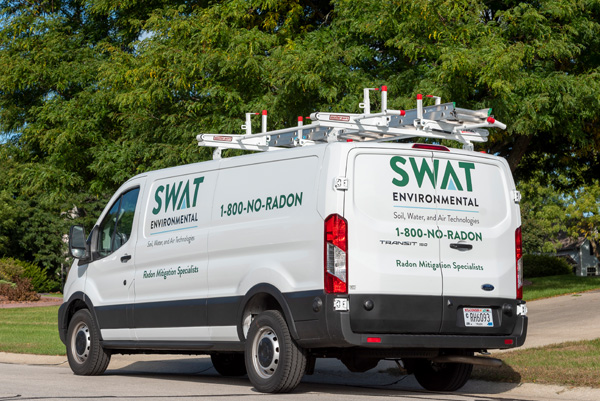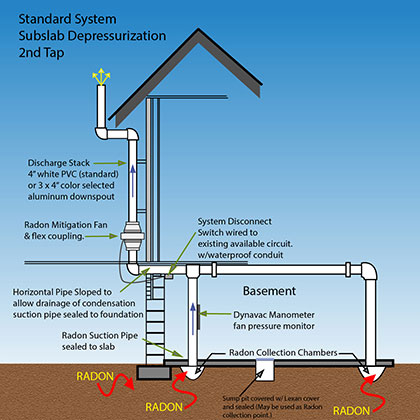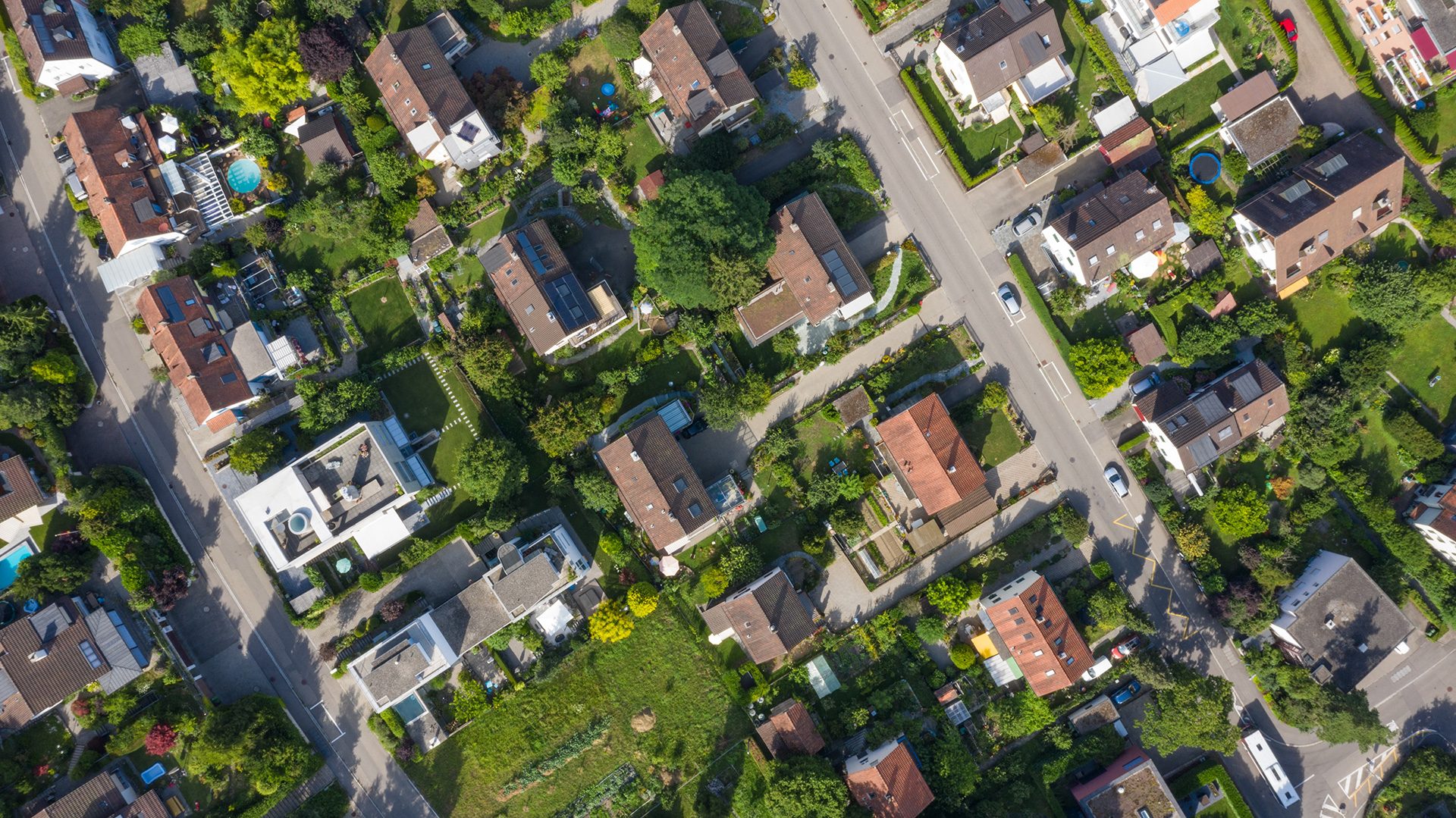Radon gas is probably the last thing on your mind as a Rochester NH homeowner. “What tiles will look good in my master bathroom?” “Should I install sod or plant seeds to start my lawn?” These are just a couple of questions that run through the minds of excited home buyers. Questions about radon mitigation and testing in Rochester almost never come up, but they should.
Radon testing is of utmost importance to ensure the safety of your home and your loved ones. Every home should be tested for radon exposure, as elevated levels can pose serious health risks. Take action today and learn more about the importance of radon testing by visiting the CDC’s website.
Here are some facts about radon and radon mitigation Rochester NH homeowners should should know:
Radon gas causes more deaths every year than all weapons combined, including guns. Radon gas is radioactive and damages cells which can result in cancerous tumors. While exposure to radon doesn’t lead to a cancer diagnosis right away, the substance causes continuous damage within body over time which can ultimately lead to development of the disease. Radon‘s radioactive particles are known to settle within the lining of the lungs and cause cell damage there. Researchers conclude that radon exposure is the cause of approximately 21,250 lung cancer deaths annually, including residents right here in Rochester New Hampshire.
Most health experts agree that exposure to radiation is toxic to the human body. Radon is one of the densest and heaviest known gases. According to scientists, this toxic gas is roughly nine times heavier when compared to oxygen. Radioactive substances are associated with nuclear power plants and uranium mines. Unless you’re a miner or work at a power plant, you probably don’t believe that your risk of exposure is high enough to warrant concern. In this case, you’d be wrong. Radon is a naturally occurring gas that’s a byproduct of decayed uranium found deep within the earth including areas of Rochester NH. When the gas rises from the ground, most of it dissipates in the outdoor air. However, some of the gas seeps into homes and commercial buildings and gets trapped inside. Since you can’t see, smell, or taste radon, the gas can build up to hazardous levels without anyone noticing the problem until it’s too late.
Interesting Facts About Rochester NH
Rochester is located in Strafford County New Hampshire. The population of Rochester NH and surrounding areas is 31,526. The Mayor is Caroline McCarley of City of Rochester which is located at 31 Wakefield St, Rochester NH 03867. The local school system is Rochester School District which has the national school code of 3305940 and FIPS code of 33017084202. The median income in Rochester NH is $44,735 with an unemployment rate of 4.3%. The average house value is $176,640 and median rent price is $1,041. Both single family homes and rental properties in Rochester New Hampshire should be tested for radon and mitigation should be performed when necessary.
The average age of Rochester residents is 41.8 years old. The local post office can be found at 62 MAIN ST # 2, ROCHESTER NH 03868-9996. The city center has the following geo coordinates: 43.299 latitude, -70.9787 longitude which can precisely be found near Emmanuel Church, Rochester, NH. The metropolitan market falls within the Boston-Cambridge-Newton, MA-NH region and is within the 603 area code. Since New Hampshire radon problems are fairly common, it is important that all Rochester NH dwellings are subject to frequent radon testing and mitigation when necessary.
Rochester, New Hampshire encompasses the following counties: Strafford and includes the following zip codes: 03839 03868 03867 03866.

Radon Problems in Rochester Homes
When you think of health hazards in Rochester NH, a slew of external threats come to mind. However, the radioactive byproducts of radon are a deadly foe that’s found right at home where you’re supposed to be the safest. If you have certain unexplained respiratory ailments, you should check for symptoms of radon exposure. Some of the common signals that your lungs have been compromised by radon include wheezing, coughing up blood, and chest pain. Radon gas is the second most frequent cause of lung cancer in America, including Rochester New Hampshire.
When experts conduct radon mitigation in Strafford County NH, they find that the gas and its radioactive particles are waterborne as well as airborne. The gas contaminates groundwater but often gets detected and removed at municipal water treatment centers. People who rely on well water should get their water tested for radon even though waterborne radon problems are generally less common than airborne, especially in Rochester. According to Avni Quintero, radon gas is responsible for approximately 60 deaths each day in the United States.
The only way that you can make sure that your Strafford County home is free from radon is by testing the air and water in dwelling. While most people prefer professional radon testing, you can get a quick look at your home’s radon status with an at-home radon test kit. Most Rochester NH hardware stores sell these test kits and they are also available online at reasonable prices.
Basements tend to have higher levels of airborne radon than other parts of homes or businesses. If you have a basement, it’s best to start your test there. If your home is built on a crawl space or slab, conduct the radon test on the lowest livable level. As a resident of New Hampshire, radon testing and mitigation should be a routine step in home ownership. Radon gas causes more deaths every year than all weapons combined, including guns.

More Information About Radon Mitigation in Rochester New Hampshire
If you have high levels of radon in your home or workplace, you’ll need a professional New Hampshire radon mitigation company to install a radon reduction system on your property. SWAT Environmental services all Strafford County, NH including Rochester and the 3839 area. During the installation process, technicians seal gaps, cracks, or openings that lead to the ground. They follow up by installing a system that creates vacuum suction under the building using negative pressure. Radon gas that builds up underneath the home gets drawn into the vacuum tubes and away from the structure before it seeps into interior spaces.
Conclusion: You probably already know that smoking is the leading cause of lung cancer in the United States according to the research that the American Cancer Society and Rochester health authorities continue to conduct. However, most people don’t know that radon is the second leading cause of lung cancer in this country. Radon is one of the densest and heaviest known gases. According to scientists, this toxic gas is roughly nine times heavier when compared to oxygen. This deadly runner-up slides under the radar with many homeowners because it’s not easily detected without a special test. After learning about the harmful effects of radon, governing bodies continue to advocate for widespread testing and radon mitigation across New Hampshire cities. Just remember, radon mitigation systems in Rochester NH are very common and actually increase the value of the home.

